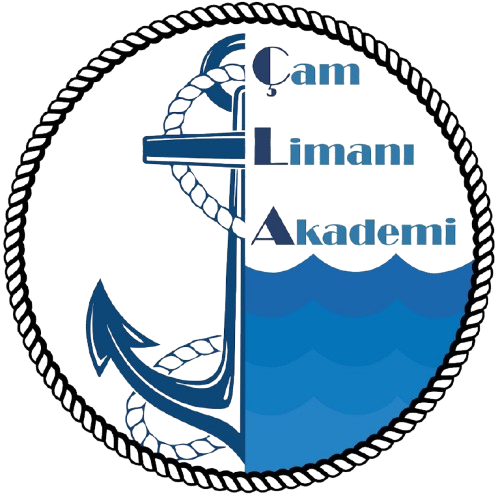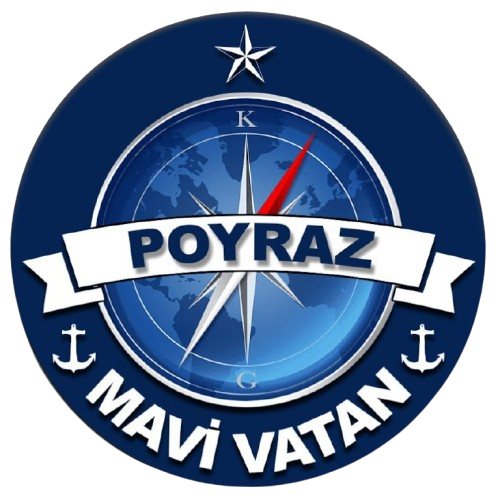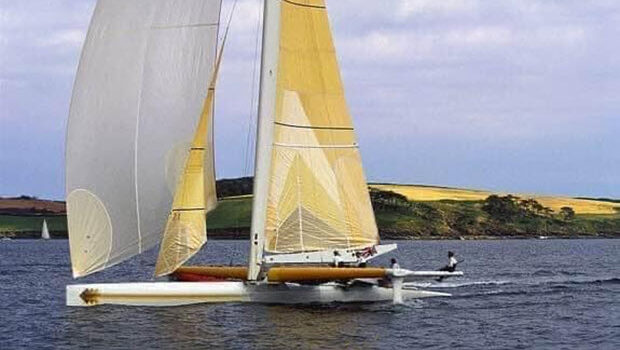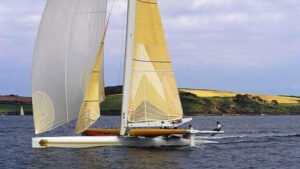The Curmudgeon’s once noted how “If you want a new idea, read an old book.” This observation comes to mind from a report by yacht designer and past Seahorse magazine editor Julian Everitt:
Thirty-six years ago, Tony Berry and Peter de Savery funded a 60-foot foil stabilized monohull. Called Blue Arrow, she was built to take on the 120-foot Kiwi challenger for the 1988 America’s Cup, but the New Zealander’s refused to take on the British challenger and then lost to the American defender Stars and Stripes.
Blue Arrow, ‘conceptually’ similar to the latest foil born AC75 monohull concept that the Kiwis evolved for the 2021 America’s Cup, was in fact very quick in a straight line, but potentially prone to capsizing at low speeds. What look like multihull cross beams, were in fact designated as sliding keels with adjustable foils on the ends giving the ultra slim monohull the necessary power to carry her partial wing rig.
In many ways, this is a braver concept than the Kiwi idea as Blue Arrow carried no ballast. Typically British of course! Brilliant innovation, but no follow thru. Thirty years on, the New Zealander’s get the credit for their ‘originality’. Bit like the Harrier or even the jet engine!
I guess as a philosophical question, what is the key to invention? The concept idea or the execution of the idea? Leonardo de Vinci vs. the Wright Brothers, for example. Now I know many of you will say that the latest generation monohulls actually fly on their foils, but then so did Blue Arrow. The difference was only in the amount of lift generated.
In the case of Blue Arrow, it was enough for stability only, but it would only have been a matter of time before the foils evolved to lift the main hull clear. Look what happened with the development of the AC72 multihulls. Nobody expected them to fly until the Kiwis ‘took-off’ and that development happened very quickly indeed.
Source: scuttlebutt – https://www.sailingscuttlebutt.com/2024/07/24/what-is-the-key-to-invention/








